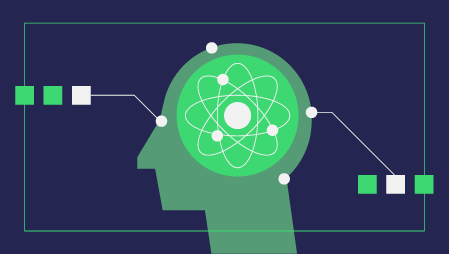Ready to learn Artificial Intelligence? Browse courses like Uncertain Knowledge and Reasoning in Artificial Intelligence developed by industry thought leaders and Experfy in Harvard Innovation Lab.
Big data and AI technologies have the potential to be incredibly transformative for a variety of industries, including oil and gas. In fact, the AI market specifically for oil and gas is expected to reach USD 2.85 billion by 2022. It’s growing fast as more companies realize the potential of the technology.
Already, the technology has found a place in the industry. Artificial intelligence is being used to discover new gas and crude oil sources, optimize various industrial processes such as the transport of raw oil and even make more positive environmental decisions. Researchers from the Environmental Defense Fund, for instance, are working on a system that utilizes Natural Language Processing to identify what threats a project might pose to local wildlife, water, and cultural heritage locations.
What about the greater industry though? How are oil and gas companies putting AI technologies to use in today’s market? To break it down, we’re going to take a look at the three most important sectors in oil and gas: upstream, midstream and downstream applications.
Upstream Applications
Also referred to as the Exploration and Production sector, upstream is all about discovering, assessing and extracting crude oil or natural gas from their sources. A vast majority of organizations working in the space operate drilling and production wells and deal with the initial collection of various fuels.
A majority of applications in this sector involve upgrading or enhancing existing equipment, much of which has been stagnant in terms of innovation. Drillers and extraction companies can make use of IoT equipment to monitor operations in real-time, which will be, in turn, powered by AI and machine learning systems that collect, process and react to information.
Tachyus — a data supplier based in Silicon Valley — has developed a platform that uses a variety of stats to predict mechanical equipment failure. It can also be used to discern more efficient working conditions as a means to reduce costs, eliminate maintenance issues and boost output.
Similarly, Ambyint has created “intelligent High-Resolution Adaptive Controllers,” which integrate with lift system components to provide real-time insights and optimize performance.
Collectively, these new platforms are being monitored and facilitated by AI and machine learning technologies to both automate and optimize operations. There are many new players in this area of the market. Total and Google Cloud have also teamed up to collectively develop AI-powered oil and gas exploration and production solutions.
Midstream Applications
The midstream sector is dedicated to the transport and delivery of raw oil and natural gas. Operations in this sector are more about meeting current demand and properly — or safely — transporting goods to their final destination. Massive oil spills can have a serious impact, not just economically but environmentally as well.
In addition, since we’re using big data and AI systems to identify safer methods of transport and optimized storage solutions, they can also be used to monitor the whereabouts of transports and verify their safety. Pirates are notorious, for example, for hijacking and attacking oil tankers and transports.
AKW Analytics’ PALM software — which stands for Petroleum Analytics Learning Machine — relies on machine learning to analyze information pertaining to resource gathering and transport. It’s designed for both upstream and midstream use and meant to optimize production levels through real-time data collection.
Downstream Applications
In the downstream sector, we see many of the forward-facing companies that deal with the distribution and sale of oil, petroleum and natural gas products. These companies process and produce oil-related products such as gasoline, lubricants, fertilizers, and propane.
Currently, the United States produces 10.4 million barrels of oil per day, making it one of the top regions globally, ahead of Saudi Arabia and Russia. With these numbers, it’s easy to see how any kind of hiccup — large or small — can disrupt an entire nation. A gasoline shortage alone has the potential to upend the lives of millions.
Therefore, downstream applications tend to focus on the proper optimization of demand not just to boost revenue for various organizations but also to improve the consumer experience. Oracle’s EPM Cloud platform comes in handy here, as it can be used to provide accurate models and forecasts based on operating performance, scenario analysis, and market trends.
AI and Machine Learning Are in Their Infancy
It’s important to remember that while many of these solutions are becoming more common, the technologies involved are still quite new, especially for oil and gas applications. As a result, what you see here is not meant to be a comprehensive list, especially considering that oil and gas companies will start getting more creative with how they employ such technologies.
One thing is definitely clear, however, and it’s that artificial intelligence will have a monumental impact on the oil and gas sector.





Like!! Thank you for publishing this awesome article.
I really like and appreciate your blog post.